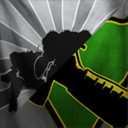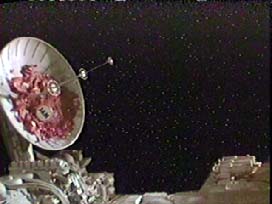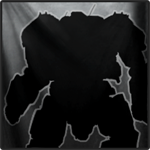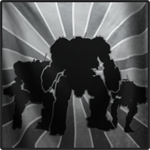
Murphy's Laws Of Combat: The Arty Always Falls Short
#1
Posted 30 May 2015 - 10:20 AM
I think itd be funny (and horrible) if the arty in this game had that downside to it as well.
Since the arty guys call arty not by location but by popped smoke (I assume thats because they scan the surface with satellites looking for said smoke) wouldnt they miss sometimes? Also; how do the friendly arties tell from the enemy smoke? Theyre the same color. What if it was just one arty company and they are neutral, just firing where they see smoke?
If the smoke if used as the spotter and the arty scans satellites for that smoke, wouldnt taking over/out the satellites be the first thing you do when getting ready to attack or defend?
I know; these are too deep of questions for this game but they came to me anyway and I thought it would make for a good, light hearted thread instead of the constant serious buzinezz threads we always see
#2
Posted 30 May 2015 - 10:22 AM
#3
Posted 30 May 2015 - 10:40 AM
#4
Posted 30 May 2015 - 10:44 AM
 Mechwarrior Buddah, on 30 May 2015 - 10:20 AM, said:
Mechwarrior Buddah, on 30 May 2015 - 10:20 AM, said:
I think itd be funny (and horrible) if the arty in this game had that downside to it as well.
Since the arty guys call arty not by location but by popped smoke (I assume thats because they scan the surface with satellites looking for said smoke) wouldnt they miss sometimes? Also; how do the friendly arties tell from the enemy smoke? Theyre the same color. What if it was just one arty company and they are neutral, just firing where they see smoke?
If the smoke if used as the spotter and the arty scans satellites for that smoke, wouldnt taking over/out the satellites be the first thing you do when getting ready to attack or defend?
I know; these are too deep of questions for this game but they came to me anyway and I thought it would make for a good, light hearted thread instead of the constant serious buzinezz threads we always see
 Mechwarrior Buddah, on 30 May 2015 - 10:40 AM, said:
Mechwarrior Buddah, on 30 May 2015 - 10:40 AM, said:
Specially when the planetary data for every CBT planet is on record on the net. Heck a friend of mind named Gravedigger wrote up all the data including weather conditions.
#5
Posted 30 May 2015 - 11:03 AM
#6
Posted 30 May 2015 - 11:17 AM
#7
Posted 30 May 2015 - 11:27 AM
Smoke is used in some instances today for marking a spot they want hit (usually for air) but artillery FSTs can use it as well as they only need the 8 to 10 digit grid coordinate of the smoke. But there are multiple methods of acquiring target data. The most common two are sending up grid coordinates and the polar plot. Polar plots require the known location of the observer, who must send the distance and direction to the target, which is common in FSTs using laser range finders with attached GPSs.
Once they have the target location, they send up the three part Request for Fires:
- First Transmission: Observer ID and WARNO (Warning Order)
- Second Transmission: Target Location
- Third Transmission: Target description, Method of engagement, Method of Fire and Control
Once that information is relayed from the front to the rear where the artillery is, the relavant information is sent the FDC (Fire Direction Center) which then gets the information needed from a computerized system or they Old Skool it with "charts and darts." Some of the things they have to take into a account are: elevation of target, elevation of guns, masking angle of guns, location of guns, size of powder charge to use, type of warhead to use, type of fuse to use, etc
Once the FDC gets the necessary information, they translate it into useable data for the Cannoneers on the gun line so they know what elevation to lay their tubes, what direction to point their guns, what powder charge, what warhead, what fuse type and when to fire.
Once all that is settled, then the guns can fire. And dependent on the variables such as it being a high angle or low angle mission, the distance to the target, powder charge used, etc the TOT for the rounds can be anywhere from 10 to 45 seconds. To give you an idea on flight speeds, there are 7 available powder charges. A #2 Charge in a 155m M109A6 will belch the round out at 462 +/- 5 m/s where as the #7 Charge will launch the shell at 682 +/-5 m/s.
A fire mission in the real world goes similar to these lines:
First transmission:
- Observer: "Nomad 10, this is Striker 15, Fire for Effect, over."
- Battery: "Striker 15, this is Nomad 10, Fire for Effect, out."
- Observer: "Grid, Echo Sierra 1234 9876, over."
- Battery: "Grid, Echo Sierra 1234 9876, out."
- This is point where the firing solutions are drawn up
- Observer: "two medium mechs, one tank, and 20 dismounted infantry, light cover, over."
- Battery: "two medium mechs, one tank, and 20 dismounted infantry, light cover, out."
- At this point, there is enough information for them to decide what rounds, fuses, etc
- Battery: "Alpha, Air burst in effect, five rounds, over."
- Observer: "Alpha, Air burst in effect, five rounds, over."
- What this tells the observer is that Alpha battery is firing, they are firing Air burst rounds, and each gun is firing five rounds each.
- Observer: "Fire for effect, over." The order for the guns to fire
- Battery: "Fire for effect, out."
- Battery: "Shot, over." confirming that rounds are in the air.
- Observer: "Shot, out"
- Battery: "Splash, over" is given when rounds are five seconds from impact
- Observer: "Splash, out."
- After rounds have splashed down, the observer looks over the target and determines if another fire mission is needed to finish the target or if the target is sufficiently destroyed. If another mission is needed, the Observer simply transmits "Repeat, over" meaning he wants the exact same fire mission as the previous one. If the target is #rekt the Observer sends an EOM, "Nomad 10, this is Striker 15, End of mission: 1 medium mech destroyed, 1 medium mech crippled, 1 tank crippled, estimate 20 casualties, over." And the Battery repeats that with an "out."
Some common things that go wrong which is why you never want to be on the G-T Line, the line that can be drawn from the firing battery (Gun) through the target:
- The wrong elevation is used for either the target or the firing battery, which leads to rounds falling short or going over
- Using the wrong powder charge for the wrong angle of mission, which leads to rounds falling short or going over
- Getting the observer location wrong when using polar plot or target location wrong when using grid reference, which leads to rounds going left or right, or far or short of the target.
#8
Posted 30 May 2015 - 02:33 PM
That's when your computer gets the grid coordinates your crosshairs are on, send it, and pops a smoke there, just as a precaution so you'd know if you screwed up. Then either one of the aerospace fighters peels off for a bombing run, or the warrior fires up their System and launches a volley right where you asked. And with the systems synced up before the battle the always get the right grid coordinates, Where you told em, though maybe not be where you wanted it sometimes.
To all the combined arms warriors out there who make our battles possible. <o.
~Leone, Raid Leader of the Crimson Hand.
#9
Posted 30 May 2015 - 02:49 PM
#11
Posted 30 May 2015 - 03:14 PM
 Lord Scarlett Johan, on 30 May 2015 - 11:27 AM, said:
Lord Scarlett Johan, on 30 May 2015 - 11:27 AM, said:
As a retired mortar gunner (120mm towed mortar), that sounds about right.
Only thing I'd add is that (at least for us high-angle guys), weather and temperature is also taken into account when the egg-heads in the FDC cast their chicken bones and chant their rituals to determine the proper way to point our tubes
For us down at the actual business end it's like
---
Lazing about in the sun, smoking, and chewing the fat with the lads, not a care in the world. Man, I love this job.
---
"Fire order incoming!"
"Set bearing 1234, elevation 670, prepare to fire three rounds HE impact, charge four"
---
Frantic activity ensues.
---
"Bearing 1234, elevation 670 set"
"three rounds HE impact, charge four prepared"
"ready to fire"
---
long-ass wait during which I'm checking and double-checking the bearing/elevation about a million times, and three of my mates are each holding a 16.5 kg mortar shell in their arms, one of them holding his just over the lip of the mortar barrel.
---
"Fire!"
*boom - boom - boom*
"three rounds HE impact, charge four fired"
And then, immediately after the last round leaves the barrel, we pack our mortars up and haul ass out to the next firing position - counter-arty is a real thing, and nobody wants to be there when it drops down.
Also, as a PSA - those dinky 40mm mortars you see in WWII and 'Nam movies, the ones that go "phut" when they fire? 120mm mortars don't go "phut". I once had to fire a full-charge round before I had my earplugs and hearing protection on, and I was deaf for two days, and suffered a roughly 5% hearing loss on my right ear.
Finally, so as not to keep this totally off-topic: As a former artilleryman I resent the implication that our rounds ever hit anything other than their intended target
Edited by stjobe, 30 May 2015 - 03:26 PM.
#12
Posted 30 May 2015 - 03:22 PM
Here, it goes right to FFE. The sadistic part of me would LOVE to see corrections having to be made in game but I could see it going haywire with a quickness LOL.
I dunno, I carried an M249, not a tube.
Edited by dethikeed, 30 May 2015 - 03:22 PM.
#13
Posted 30 May 2015 - 03:51 PM
 Joseph Mallan, on 30 May 2015 - 10:44 AM, said:
Joseph Mallan, on 30 May 2015 - 10:44 AM, said:
Specially when the planetary data for every CBT planet is on record on the net. Heck a friend of mind named Gravedigger wrote up all the data including weather conditions.
Got a link for it? I'd be very interested in checking it out
#14
Posted 30 May 2015 - 03:52 PM
But yeah, the way it works in this game makes no sense.
- Regardless of what direction you're pointing, allied forces have a bomber ready to drop an airstrike anywhere on the map, in any direction you desire. Whether you want it dropped from the north or from the south, they have an incoming aircraft ready to drop bombs on 5 seconds notice. I guess they must have hundreds or thousands of aircraft circling above the battlefield, making constant bombing runs just in case they get the call for an airstrike.
- Our red smoke grenade launchers have infinite range and the grenades seem to move at light speed. Who the hell needs gauss rifles? We should just shoot each other with red smoke grenades, they seem to be hyper advanced railguns or mass drivers.
- When collision is enabled in this game, it's going to be bad news for the bombers.

Edited by Alistair Winter, 31 May 2015 - 02:00 AM.
#15
Posted 30 May 2015 - 11:02 PM
 Alistair Winter, on 30 May 2015 - 03:52 PM, said:
Alistair Winter, on 30 May 2015 - 03:52 PM, said:
[*]When collision is enabled in this game, it's going to be bad news for the bombers.
[/list]

HSR already allows the bending of space-time and teleportation ... so...
And the planetary satellite network? Jordan Weisman (Battletech designer) in an early 2009 MWO interview justified the forward-facing radar by saying that on a contested planet, one of the first things to be destroyed will be the satellite network.
So I guess you just have to look for those infantry spotters/observers if you want to avoid the ordnance.
#16
Posted 30 May 2015 - 11:18 PM
However, consumables are terrible C-Bill sink and unless a tournament is going on, I stopped using them.
Edited by El Bandito, 30 May 2015 - 11:19 PM.
#18
Posted 31 May 2015 - 12:48 AM
That is the true power of consumables.
UAV to rally your PUG's onto one point, strike to break up the enemy formation, chat to watch the complaints about Elo being to blame for the result.
All the strike needs is the coordinates by radio, the smoke is a lie.
#19
Posted 31 May 2015 - 01:56 AM
 Lord Scarlett Johan, on 30 May 2015 - 11:27 AM, said:
Lord Scarlett Johan, on 30 May 2015 - 11:27 AM, said:
Smoke is used in some instances today for marking a spot they want hit (usually for air) but artillery FSTs can use it as well as they only need the 8 to 10 digit grid coordinate of the smoke. But there are multiple methods of acquiring target data. The most common two are sending up grid coordinates and the polar plot. Polar plots require the known location of the observer, who must send the distance and direction to the target, which is common in FSTs using laser range finders with attached GPSs.
Once they have the target location, they send up the three part Request for Fires:
- First Transmission: Observer ID and WARNO (Warning Order)
- Second Transmission: Target Location
- Third Transmission: Target description, Method of engagement, Method of Fire and Control
Once the FDC gets the necessary information, they translate it into useable data for the Cannoneers on the gun line so they know what elevation to lay their tubes, what direction to point their guns, what powder charge, what warhead, what fuse type and when to fire.
Once all that is settled, then the guns can fire. And dependent on the variables such as it being a high angle or low angle mission, the distance to the target, powder charge used, etc the TOT for the rounds can be anywhere from 10 to 45 seconds. To give you an idea on flight speeds, there are 7 available powder charges. A #2 Charge in a 155m M109A6 will belch the round out at 462 +/- 5 m/s where as the #7 Charge will launch the shell at 682 +/-5 m/s.
A fire mission in the real world goes similar to these lines:
First transmission:
- Observer: "Nomad 10, this is Striker 15, Fire for Effect, over."
- Battery: "Striker 15, this is Nomad 10, Fire for Effect, out."
- Observer: "Grid, Echo Sierra 1234 9876, over."
- Battery: "Grid, Echo Sierra 1234 9876, out."
- This is point where the firing solutions are drawn up
- Observer: "two medium mechs, one tank, and 20 dismounted infantry, light cover, over."
- Battery: "two medium mechs, one tank, and 20 dismounted infantry, light cover, out."
- At this point, there is enough information for them to decide what rounds, fuses, etc
- Battery: "Alpha, Air burst in effect, five rounds, over."
- Observer: "Alpha, Air burst in effect, five rounds, over."
- What this tells the observer is that Alpha battery is firing, they are firing Air burst rounds, and each gun is firing five rounds each.
- Observer: "Fire for effect, over." The order for the guns to fire
- Battery: "Fire for effect, out."
- Battery: "Shot, over." confirming that rounds are in the air.
- Observer: "Shot, out"
- Battery: "Splash, over" is given when rounds are five seconds from impact
- Observer: "Splash, out."
- After rounds have splashed down, the observer looks over the target and determines if another fire mission is needed to finish the target or if the target is sufficiently destroyed. If another mission is needed, the Observer simply transmits "Repeat, over" meaning he wants the exact same fire mission as the previous one. If the target is #rekt the Observer sends an EOM, "Nomad 10, this is Striker 15, End of mission: 1 medium mech destroyed, 1 medium mech crippled, 1 tank crippled, estimate 20 casualties, over." And the Battery repeats that with an "out."
- The wrong elevation is used for either the target or the firing battery, which leads to rounds falling short or going over
- Using the wrong powder charge for the wrong angle of mission, which leads to rounds falling short or going over
- Getting the observer location wrong when using polar plot or target location wrong when using grid reference, which leads to rounds going left or right, or far or short of the target.
But we're not a millennium into the future see
#20
Posted 31 May 2015 - 02:00 AM
I hate artillery and strikes. They shouldnt be in the game in the first place. The whole module and consumables system is flawed from the start.
Edited by Sarlic, 31 May 2015 - 02:01 AM.
1 user(s) are reading this topic
0 members, 1 guests, 0 anonymous users

































